After the disastrous 1932-33 cruise, which attracted only 283 passengers, Canadian Pacific reduced all of the fares for its 1934 world cruise aboard the Empress of Britain by $150 to $250. The lowest fares dropped from $2,250 to $2,100, while the top fares dropped from $6,150 to $5,900. This increased the total number of passengers grew to 452. Since the same number of staff were used no matter how many passengers paid fares, more passengers meant more profits.
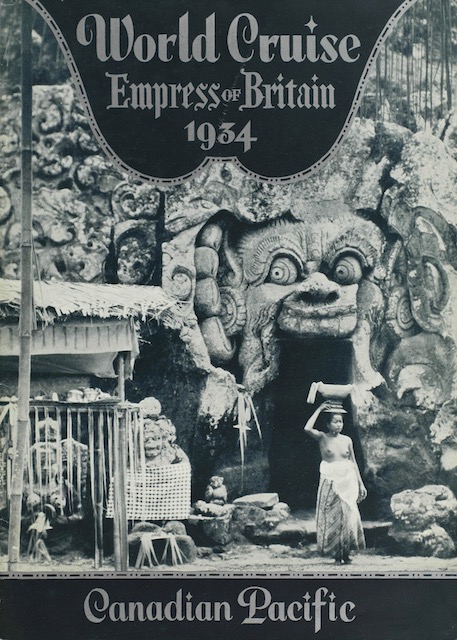 Click image to view and download a 61.3-MB PDF of this booklet from the University of British Columbia Chung collection.
Click image to view and download a 61.3-MB PDF of this booklet from the University of British Columbia Chung collection.
The cover of the booklet advertising the 1934 world cruise features Goa Gajah, or the elephant cave, in Bali, a new stop on the cruise. The cruise was 130 days, or one day longer than the previous year, and stopped in three more port cities.
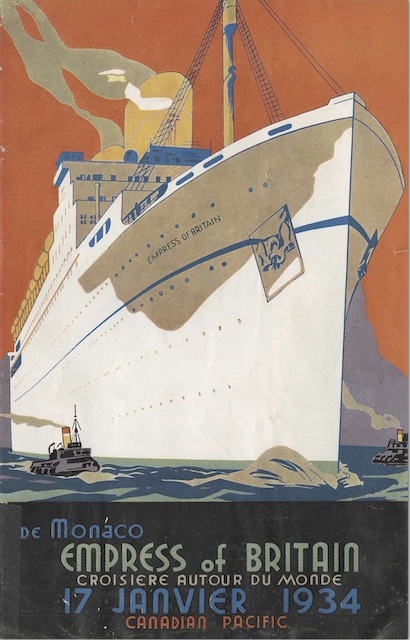 Click image to view and download a 10.1-MB PDF of this brochure from the University of British Columbia Chung collection.
Click image to view and download a 10.1-MB PDF of this brochure from the University of British Columbia Chung collection.
This fare brochure was directed at Europeans and quoted the fares for a cruise that began in Monaco and ended in Southampton, making the trip 124 days long. Fares are quoted in pounds.
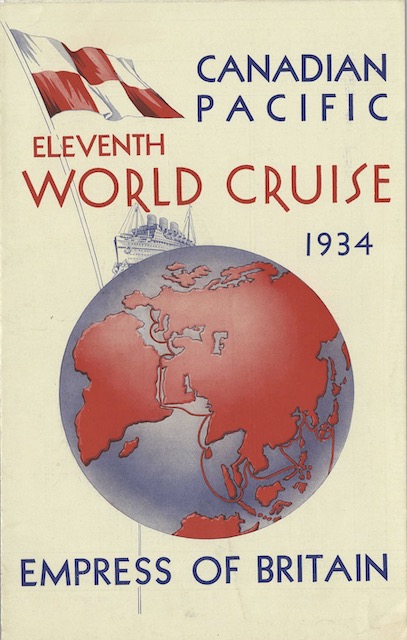 Click image to view and download a 9.5-MB PDF of this brochure from the University of British Columbia Chung collection.
Click image to view and download a 9.5-MB PDF of this brochure from the University of British Columbia Chung collection.
This brochure is in French and quotes fares for the same 124-day trip. However, the fares are in guineas, not pounds: one guinea was equal to 1.05 pounds. According to Wikipedia, “The guinea had an aristocratic overtone, so professional fees, and prices of land, horses, art, bespoke tailoring, furniture, white goods and other ‘luxury’ items were often quoted in guineas.” That doesn’t explain why that applies to the French but not the British.
The Chung collection has a fragment of a document that lists fares in dollars. The cover is torn off so there is nothing to show here but it has the fares for every room on the ship.
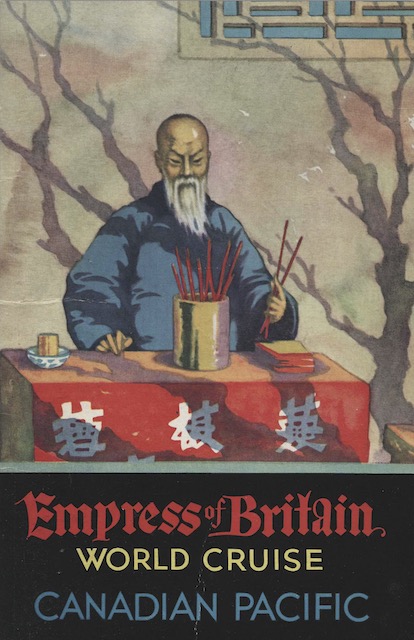 Click image to view and download a 9.5-MB PDF of this booklet from the University of British Columbia Chung collection.
Click image to view and download a 9.5-MB PDF of this booklet from the University of British Columbia Chung collection.
The list of passengers has the same cover painted by Flora DeMuth that was used on the 1929-30 world cruise. Martin DeMuth is listed as lecturer and cruise artist while “Mrs. Martin DeMuth” is also a cruise artist.
Among the passengers were Belgian Prince de Caraman-Chimay and his second wife, Anne; Russian Prince Nicholas Engalitcheff and his third wife Susannah; and the Scottish Earl of Lauderdale, who at the time was Ian Maitland. Other passengers included Mr. & Mrs. George Gorman, who may have been the George Gorman who was once a member of Congress.
I’ve restrained myself up until now, but I have note how irritating it is that these passenger lists wouldn’t print the first names of married women or even widows. For example, it lists Mrs. James Mott Hartshone, whose husband had died the previous year.
I know this was traditional among the wealthy at the time. Wealth has its privileges (such as the Earl of Lauderdale going unpunished for having sex with another man while the other man got nine months in prison), but is it a privilege to be anonymous or known only as “Mrs. James Mott Hartshone”? This should have been especially galling to some of the wealthy American women who married broke European aristocrats, only to lose both their first and last names.
The collection also has shore excursion booklets for this cruise, including booklets for Athens, Bangkok, Gibralter, Hong Kong, Japan, Naples, Palestine & Egypt, Panang, Peiping, and Singapore. The covers of the booklets for Athens and Hong Kong are missing.
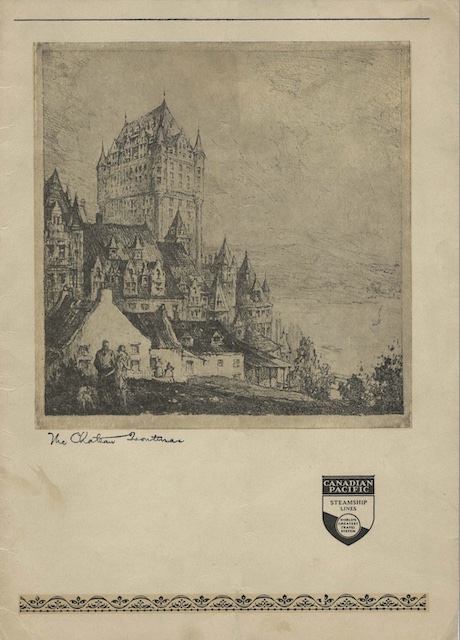 Click image to view and download a 9.5-MB PDF of this menu from the University of British Columbia Chung collection.
Click image to view and download a 9.5-MB PDF of this menu from the University of British Columbia Chung collection.
Finally, we have this menu for a “special lunch” that was served on April 29 when the ship was docked in San Pedro. I’m not sure what was “special” about it except that it was served to people who weren’t interested in the excursion to Los Angeles.
